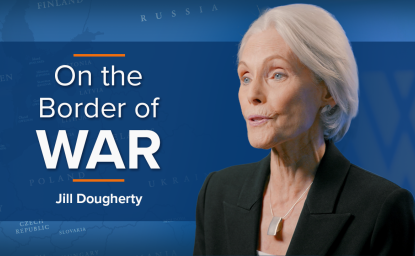A Different Approach on Iran
The recently released National Intelligence Estimate has generated headlines from Washington to Tehran. Former Congressman Lee Hamilton analyzes the recent NIE and its impact on U.S. policy towards Iran.
The recently released National Intelligence Estimate has generated headlines from Washington to Tehran. Former Congressman Lee Hamilton analyzes the recent NIE and its impact on U.S. policy towards Iran.
The recent National Intelligence Estimate on Iran's nuclear intentions and capabilities has inspired headlines from Washington to Tehran -- and rightfully so. It marks a significant break with our intelligence community's previous assessments.
Just two years ago the intelligence community reported that Iran was "determined to develop nuclear weapons," but now it tells us that Iran's pursuit lacks immediacy and the previously alleged unflappable determination.
Before getting to the details, we should be clear: The NIE is many things, but it is not a roadmap for dealing with Iran. It should inform our debate, not drive it. There is no such thing as perfect intelligence. Assessments of Iran's intentions and capabilities may change, but our interests and objectives -- in this case, preventing a nuclear-armed Iran -- will not.
There are three broad categories that describe the content of the NIE: what it says, what it implies, and how it might influence our policy.
The biggest bombshell is that the intelligence community judges "with high confidence that in fall 2003, Tehran halted its nuclear weapons program." It also assesses, with "moderate confidence," that the earliest possible date Iran could have the requisite nuclear material for one nuclear weapon is late 2009, and even that is unlikely. The NIE also suggests that there is only a political solution to the present nuclear standoff.
The report's meaning is two-fold. First, it indicates the strides made within the intelligence community in the past few years. Agencies shared information. Analysts rigorously challenged their assumptions and apparently did not allow political pressure to influence their assessment. The report also illustrates the intelligence community overcoming its oft-criticized bureaucratic inertia.
Second, and more significantly, the estimate resets our debate on Iran. Whatever its intentions, and while still a menacing presence in Iraq and a hazard to our regional interests, Iran does not pose an imminent nuclear threat to the United States and its allies. The looming threat of U.S. military action consequently will fade.
But only time will answer the most important question: Will the NIE facilitate successful policy?
For the American policymaker, this will complicate our international efforts to maintain widespread international support for concerted pressure on Iran should it fail to cooperate with the United Nations Security Council; for example, China has already voiced opposition to a new round of sanctions in light of the NIE. But important friends and allies, like Britain, France and Israel, remain highly skeptical of Iran's nuclear intentions, and our lines of communication with them must remain open.
The opacity of the Iranian leadership's decision-making process inhibits the United States and its allies from evaluating the success of policies designed to obstruct Iran's pursuit of nuclear weapons. We know very little about what goes on inside that government.
In a peculiar role reversal, the International Atomic Energy Agency is less credulous than the U.S. of Iranian aims. The NIE narrowly defines Iran's nuclear weapons program, excluding Iran's declared uranium enrichment and long-range missile programs.
The IAEA's concern, and mine, is that Iran's pursuit of highly enriched uranium -- the most challenging step on the way to the bomb -- provides a latent weaponization capacity subject to the leadership's shifting priorities. Negotiations should seek to circumscribe this hedge, depriving Iran of a "breakout" nuclear weapons capability. We must not lower our guard; the threat Iran poses is still very real.
Though the U.S. should work to build solidarity among Security Council members, pursuing consensus must be balanced with the need to stay focused on Iran, its nuclear pursuits and its regional meddling. Tehran's history of deception and its leadership's declarations merit our concern and attention. We cannot afford to treat multilateralism as an end itself. We should be prepared to engage Iran diplomatically one-on-one, without preconditions.
There is time to give diplomacy a chance, and the NIE's conclusion that Iran's leadership operates on a "cost-benefit approach" indicates that a carrots-and-sticks strategy has the potential for success.
The NIE provides the opportunity to put talk of regime change on the back burner and focus on the more urgent and pragmatic objective of changing Iran's behavior.


